As we bid a not-so-fond farewell to a difficult 2023 for the industry, there are plenty of exciting innovations to look forward to in 2024. We’ve asked 16 experts for their thoughts on this year’s hottest topics.
Sustainability in the spotlight

As cinematography returns with a bang in 2024 the focus on doing so sustainably will be stronger than ever. Sustainability doesn’t just save precious natural resources; it also saves money.
Producing sustainably is rightly here to stay and being demanded by all stakeholders. With the effects of climate change being felt more than ever and being reflected on the screen, the drive behind the camera to do this has never been more focused.
Writers, actors and crews all want to make a positive difference and we are developing the tools to enable them to do so. Innovation in technology will enable further reductions in carbon emissions that productions emit whilst also being cost effective.
Andrew Hutton, head of product management, Anton/Bauer
Increased VP calibre and literacy
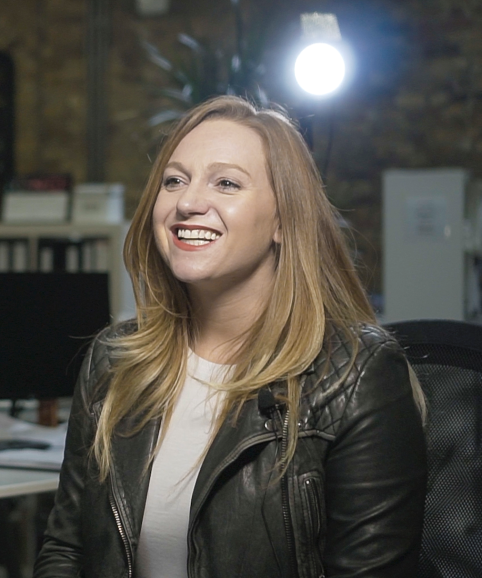
An exciting trend that we are seeing is virtual production really finding its feet as an undeniably efficient filmmaking tool. As the early hype and unrealistic expectations of virtual production seem to be dying away, we are left with a rock solid tool for filmmakers to wield bringing budget, timeline and sustainability efficiencies into 2024 production schedules. We are seeing broadly applicable use cases develop – pick up shots and simulated travel work incredibly well. We see this evidenced in the ever-increasing calibre and literacy of VP and its use cases that comes through our doors by way of the productions who book our VP stage at MARS Volume. There is now a better understanding of the advantages and limitations of virtual production which is allowing teams to really maximise their time in the studio to achieve significant budget efficiencies. And the industry heading into 2024 will be stronger for it.
Lauren Rogers, head of production, Bild Studios
Multi-camera solutions

The major industry challenges in cinema production during 2023, caused by the writers and actors strikes, generated an increased consumption for live production that has generated a greater demand for multi-camera solutions, such as Canon’s XC protocol.
We’ve also seen a need for cinema cameras to become smaller and more adaptable. New technologies like Professional Autofocus and Digital Image Stabilisation have brought more creativity, mobility and flexibility for users and generated greater filming opportunities for filmmakers and directors. A prime example of this is the EOS C70, which has been incredibly popular across several genres.
There has also been growth of virtual production across TV with cinema, we’ve seen the EOS C500 Mark II and new Flex Zoom cine lenses adopted within this space.
Graham Payne, product marketing manager, Canon UK and Ireland
Real-time compositing and rise of AI
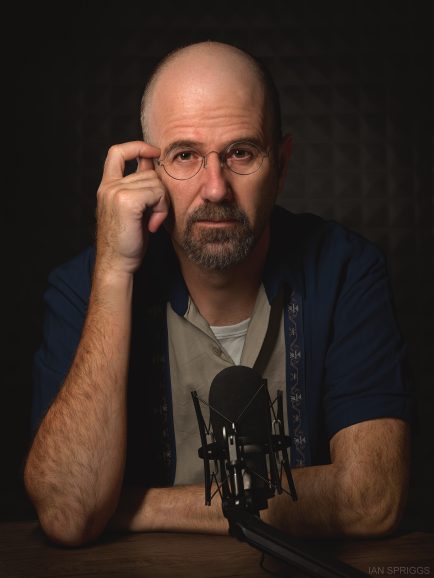
In 2024, real-time compositing will hit virtual production, broadening the possibilities of ICVFX for cinematographers. This tool will not only be massive, it will allow VP workflows to become faster, more nimble and more affordable. This will be enabled by new AI-driven, real-time rotoscoping and depth mapping, which will help VP teams insert CG backgrounds and characters in the moment. And while this might not be the final composite, it will help the DP and director make on-set decisions about where they want things to go, or what they want to try next.
We’re also going to see a lot of AI tools getting used — not for generative purposes, but for practical pursuits that free you from the physical restrictions of cameras and CG. This includes better/faster AI denoising, which will dramatically reduce camera and CG noise, and a mix of AI upscaling and frame-rate blending. This will make 8K outputs much more approachable and allow for retiming up to 240 fps. Together, these tools will continue to expand the seamlessness and speed of ICVFX.
Christopher Nichols, director of special projects, Chaos Innovation Lab
Celluloid charm
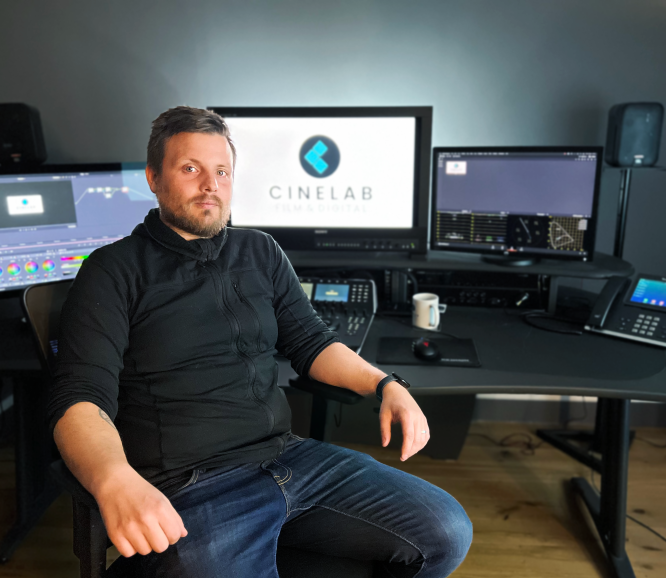
It has been great to see the continued resurgence of film in 2023 and on into 2024. Productions captured on celluloid have made up an increasing percentage of film festival programmes and released to critical acclaim, plus bumper box office returns. Films shot on film such as Poor Things, Maestro, Oppenheimer, All of Us Strangers, Killers of the Flower Moon, Past Lives and Saltburn (to name but a few) are expected to garner multiple gongs during the upcoming awards season.
Along with supporting filmmakers capturing on celluloid, Cinelab support digital filmmakers too. We noticed that for some filmmakers, they needed for a variety of reasons to capture digitally but wanted a film look. So Cinelab developed and launched an analogue intermediate process, ‘Digital-Film-Digital’, or DFD for short. Where we transfer a digital movie file via ARRILASER on to celluloid film. We then process that film and scan it back to digital with an authentic film look applied to the source footage. This technique adds real film grain, texture, and other celluloid artifacts to the digital image. We have seen heightened interest in this service last year that we expect to continue to grow in popularity across 2024.
Joshua Callis-Smith, CTO, Cinelab
Film on film
2024 will see the continued rise of filmmakers shooting on film. At Digital Orchard we’ve seen strong growth this year, both for short form and independent feature projects, processing and scanning over two million feet of film with Kodak. This is in line with an upward trend over the past five years –more and more DPs are enjoying capturing their vision on film.
In post, we’re seeing more integration of streaming platforms for hybrid working on picture finishing. There’ll always be attended grades, of course, but directors and DPs are increasingly becoming comfortable with hybrid working as projects progress through post.
Lastly looking to on-set, we’re seeing a greater variety of cameras included in digital workflows – with so many new 4k cinema cameras entering the market, high-end TV productions are snapping them up.
Callum Just, founder and CEO, Digital Orchard Group
The power of 3D and AI

2024 will be all about 3D and AI technologies. The ability to create higher quality 3D content, animations, and realistic environments more efficiently; the continued adoption of real-time and neural representations, such as Gaussian splatting, for innovative storytelling; and the deeper integration of these new technologies into traditional film making processes.
With the rapid acceleration of generative AI, by the end of the year we can expect remarkable strides forward with AI generated photo-realistic 3D content and AI editing features. Platforms such as Midjourney will move beyond still images as AI goes 3D and we’ll see incredible real-time world creation capabilities powered entirely by AI.
To not be outpaced, we will also see real-time engines such as Unreal Engine introducing a plethora of new features designed to scale vast world-building and greater realism. Similar to what we’ve seen with generative AI features being added to the Adobe suite, AI powered tools will enhance the work of 3D artists by driving efficiencies and providing creative inspiration. In 2024, generative AI will become more valuable in artists, creators, and filmmaker’s creative arsenal.
It’s not only 3D world-building that will see significant enhancements in 2024. We will increasingly witness more widespread adoption of virtual production technologies and techniques throughout the filmmaking process, from rapid real-time visualisation and shot simulation to higher quality and more adaptable scenes for in-camera visual effects. The ability to experiment in real-time will give creative teams and filmmakers the power to simply try things – collaborating to make decisions earlier in the process, and removing the traditional linear shackles.
Beyond this, the data generated on-set will be better harnessed next year. For example, data will be used to generate digital twins of on-set activities. Tracking the volume and both the physical and virtual elements and improved aggregation of this data will drive further efficiencies downstream in post-production as well as informing future projects for the production teams and studios.
Although AI is sure to become more capable in 2024, human craftsmanship will still be the driver of quality filmmaking. Technology is paving the way for more innovative and immersive storytelling, but it will still rely on humans to harness its full potential.
Simon Windsor, co-CEO and co-founder, Dimension
Rebuilding year

In sports there is a concept called “a rebuilding year”, when a key player or coach leaves and the team must regroup and find its way forward. Although nothing has been lost, there are a lot of new players, concepts, and technologies coming into the production and post worlds that have the potential to instigate dramatic and lasting changes. But those with the biggest disruption potential are still incubating.
Smaller digital cameras are offering impressive feature sets and big screen performance at a fraction of the price. As more people experience this first-hand their adoption will grow. Generative AI will continue to encroach on content creation while Utility AI seems poised to streamline and reimagine many post production processes. What will not change is the need for talented creatives to drive these tools. The question is will it require fewer creatives…?
On the consumer side, as streamer consolidation continues and production volume contracts we may find ourselves closer and closer to a non-linear version of the cable and satellite TV experiences we thought we left behind.
Seth Emmons, director of communications, Ernst Leitz Wetzlar
Light fantastic
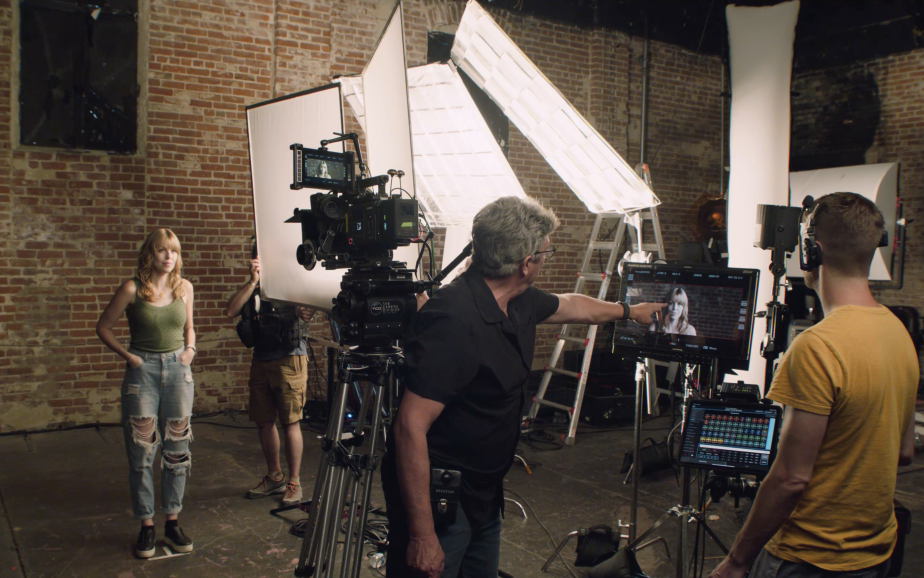
The ongoing advancements in LED lighting technology is where I see some of the most exciting cinematography trends happening in 2024. Whether it be new Fresnel-style fixtures that pack both the brightness and CRI values of HMI sources or inflatable fixtures that are super soft and lightweight, I feel I have total control now at the touch of an iPad button.
We experienced this interest firsthand with Filmmakers Academy’s ‘Cinematic Light Quality’ Masterclass, which became the most-watched educational content we have ever produced, and goes far beyond light placement to create the ultimate quality of light that will serve as a cinematographer’s calling card.
I can finesse the lighting on set so much faster, change colours, experiment quickly, and help save the planet one powerful LED at a time. Needless to say, these advances have changed the way I light as a cinematographer.
Shane Hurlbut ASC AMPAS, cinematographer and co-founder of Filmmakers Academy
Mega metadata
The year 2024 is shaping up to be exciting for cinematography, as metadata emerges as the third key recording medium, alongside audio and video. Metadata is beneficial not only for improving the quality, accessibility, and discoverability of our cinematic content but also for unleashing our creativity and storytelling potential. It is necessary in the growing need for VFX, which isn’t going away soon. It deserves the same attention and level of scrutiny to get right as any other aspect of our craft.
Of course, this year, we are also facing some challenges in our workflow: how to cope with the COVID and strikes slowdowns while needing to maximise the value of our invested assets, along with the expected reduction of our budgets.
However, these challenges also give us opportunities to innovate, adapt our business models and embrace solutions that can help us do more with less. Automation and cloud computing are some of the tools that can empower us to achieve this goal, and I encourage following the MovieLabs 2030 vision on how we can embrace these opportunities. Also, check out how we are helping post companies on this journey with our Origami Platform.
Tom Mitchell, technical director, Origami, Mission Digital
Copyright conundrums

New trends I foresee within the cinematography sphere will evolve over the year, I think we are past sudden evolutions for now post-COVID and SAG/WGA strikes, many productions and people are playing catch up to the new economy we find ourselves in, but as this settles, the spark of creativity and originality will reignite with a passion.
As such, one trend I foresee is the increased adoption of curating new content with copyright domains going public from entertainment companies, an example of this not long ago was Winnie the Pooh utilised by the Winnie The Pooh: Blood and Honey team. Curated by directors Rhys Frake-Waterfield, Scott Jeffrey and DP Vince Knight, who already completed filming the sequel in September 2023 for global release in February 2024. The sequel has 10x the budget of the original £100,000, with the casting of Simon Callow and a full prosthetics team. These films are not for everyone, but it’s a market for talented British filmmakers and crew to go global and a showcase for independent filmmaking and indie filmmakers to be bold enough to regain market share. Not many people realise independent filmmaking has declined 45% over the last five years, but have realised how dependent the UK market relied on the US economy during the strikes, which cost the entertainment industry roughly $5-6 billion in California alone.
With that in mind, Mickey Mouse is open to the domain this month (January 2024), with many more to come such as Popeye in 2025, Betty Boop in 2026, King Kong in 2029, Snow White in 2033, Superman in 2034, Batman in 2035, Bugs Bunny in 2036, Wonder Woman in 2037, Spider-Man in 2058, Scooby–Doo! in 2065, and Star Wars in 2073. The consequence and impact could be seismic but at the very least it will be interesting both visually and economically.
Christina Nowak, co-founder and managing director, New Chapter Production Ltd
Virtual viewpoint

In 2024, we’ll see a continuing adoption of virtual production workflows. Virtual stages are a great tool for storytelling, and making the most of them requires the right marriage of technologies and a careful understanding of the relationship between optics, camera sensors and LED displays. At Panavision, we’ve been studying that interplay so we can help filmmakers recognise where unwanted artifacts such as moiré can be caused and what can be done with optics to mitigate those challenges and enhance the realism of the stage environment.
Because of the nature of virtual production, where VFX works in tandem with principal photography, new supporting technologies need to benefit multiple teams across the imaging chain. For example, we’ve worked closely with camera crews as well as VFX teams to develop our Array rig and Array Lenses, which help streamline the capture of background plates for use on LED displays.
Michael George, chief operating officer, Panavision
Pushing creative boundaries
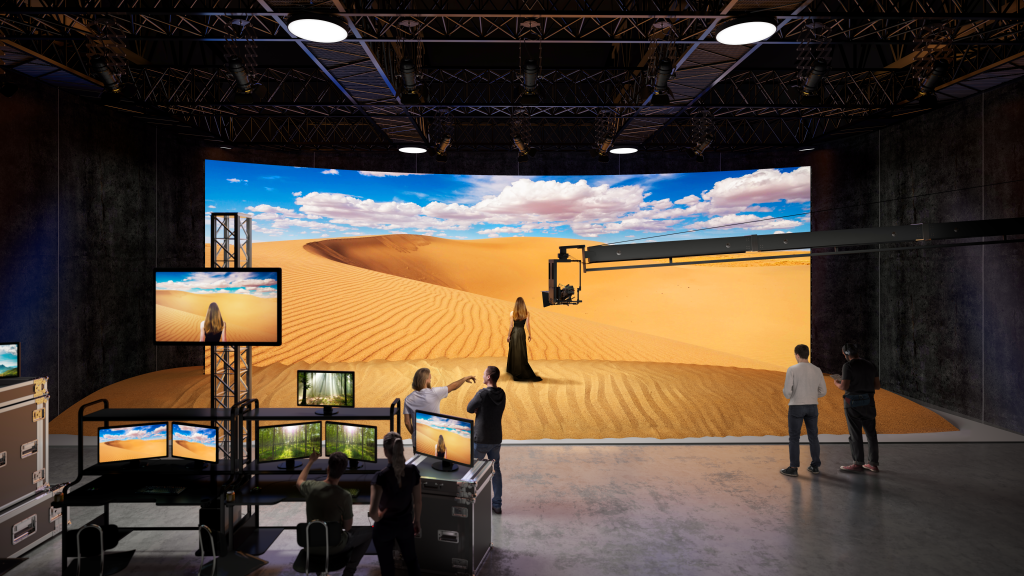
2024 will see the cementing of many technologies that enable cinematographers to push creative boundaries, enhance workflows and produce content in a more sustainable way.
Virtual production studios, for instance, will see a net growth in the coming year, in part due to the immense carbon footprint savings they allow, but also because of the convenience and creativity the technology brings. The industry will see the fruits of the experiments, education, and latest technical developments come to bear, such as Sony’s Virtual Production Tool Set, designed to tackle common problems with virtual production and to support quality In-Camera VFX.
Cloud, closely related to artificial intelligence, will continue to dominate conversations around workflows, business models and reducing the industry’s carbon footprint. However, rapidly improving cloud technology also provides more creative freedom to filmmakers efficiently. By being able to create, share and store high quality content virtually, content creators will be able to be more creative in a less expensive and less time-consuming way. Sony’s Creators’ Cloud platform ensures efficient delivery and distribution in the optimum formats for various distribution forms and provides common ID management system, authentication, and streamlined billing.
2024 will undoubtedly see further innovations in the technology for image and audio capture that underpin all of these trends and advance the art of visual storytelling.
Sebastian Leske, head of cinema business development, Sony Europe
Diving into underwater lighting
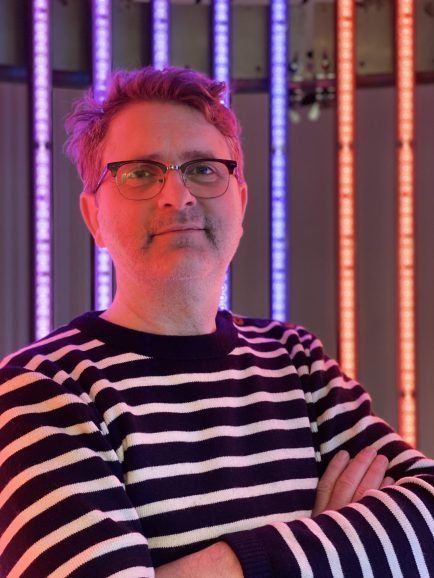
With the saturation of lighting fixtures last year, one question remains: are more pixels necessarily better suited for IBL (image-based lighting)? I believe the trend in LED-based lighting, with more pixels and features, will be replaced by the trend for more specialised solutions. One such niche specialty is underwater lighting, and it will be realised this upcoming year with a new solution from SUMOLIGHT. Additionally, modular systems based on smaller, standalone units, bars, or panels will expand rigging efficiency and bridge the gap between lighting (broad spectrum, high output, and shaping light) and IBL (optimised for displaying video content for reflections).
The more interesting trend, however, will be the further integration of lighting into VFX workflows. There will be better hardware and software solutions that make life on set much easier: mapping and controlling will become less complicated, as well as the understanding and merging of lighting and VFX workflows. New light sources will emerge that exceed LEDs in some aspects but may lack flexibility in others, of that I’m sure.
Sascha Jazbinsek, head of innovation, Sumolight
Back to the future

In 2024 we believe the trend for rehousing vintage lenses will remain strong. We also feel that there may be a shift towards more experimentation within the rehousing scene. With recent developments, we’ve received more requests to design alternative focal lengths to existing sets using wide angle adaptors or speed boosters. Over the next year we expect this to expand even further by custom making series of lenses that match, using different vintage optics and possibly even combined with modern optics too. This will give cinematographers the ultimate choice in creating their vision. Even though there is good variety of lenses available on the market, something different is always sought after.
Stephen Lowe, director of operations, True Lens Services
Stepping up content security

The proliferation of content and the pressure to create it faster than ever before are driving factors in its increasing complexity and potential vulnerability to security breaches, as are the multiple hand-offs in a production’s script-to-screen life cycle. The number of cyber-attacks will continue to increase at an alarming rate, including cybercriminals harnessing the power of AI for sophisticated schemes. Content is vulnerable at every stage of the media workflow, so we expect to see a more proactive approach with content security preparedness being budgeted, planned, and executed upfront and not as an afterthought. We expect service providers in the media and entertainment industry to keep looking for centralised and streamlined ways to reduce vulnerabilities throughout the supply chain and make every effort to ensure the content they’re working with is secure.
Terri Davies, president, Trusted Partner Network (TPN)
Would you like to share your insight for inclusion in this article? Please email helen@britishcinematographer.co.uk with your comment.











